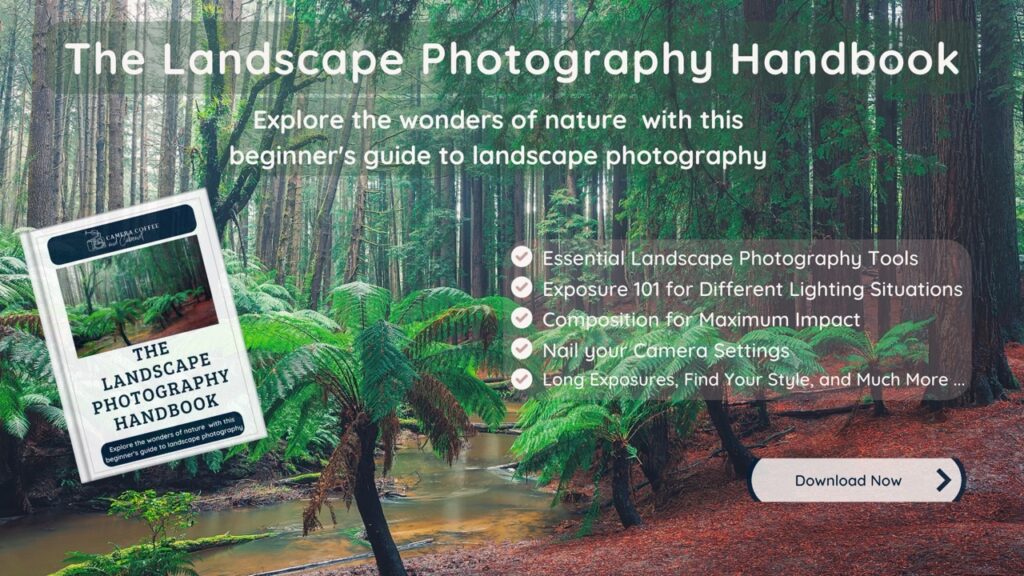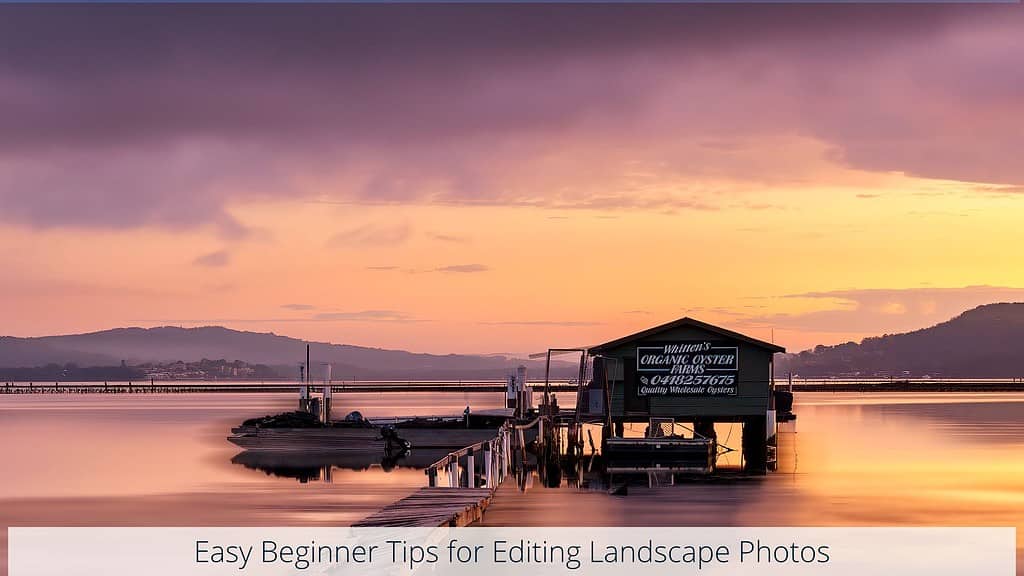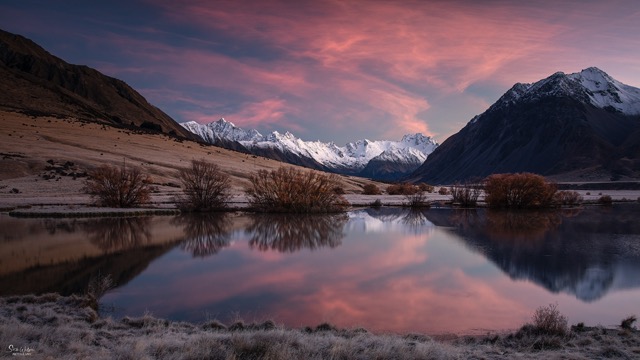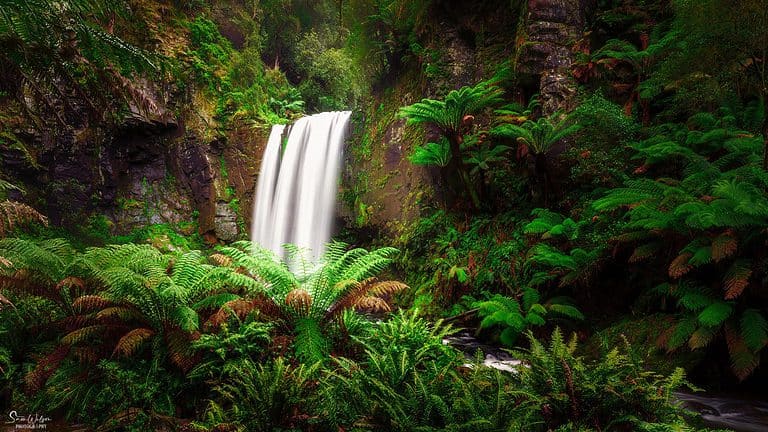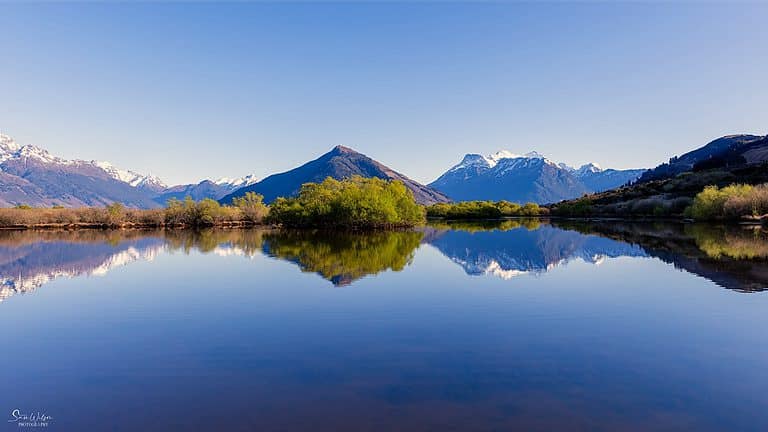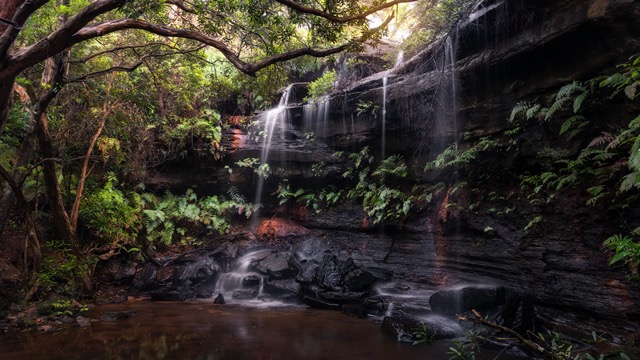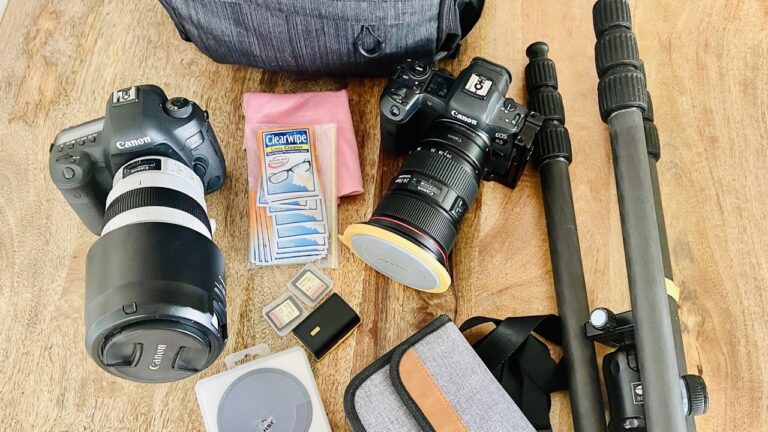Landscape Photography Composition: The Power of Leading Lines
In this article, we’re diving into the world of leading lines in landscape photography, a powerful tool for enhancing your compositions. But before we delve into leading lines, let’s touch on composition itself.
Composition, simply put, refers to how the elements within an image are arranged and affects the final result. It’s the foundation upon which we build our photographic story.
While mastering aperture, shutter speed, and ISO forms the technical backbone of photography, the way you compose these elements in your frame is what breathes life into your photographs.
When I first began my photography journey, the rule of thirds was a cornerstone of my learning.
But as my passion – let’s call it a healthy obsession – with photography grew, I found myself increasingly drawn to the technique of using leading lines to create compelling compositions.
Leading lines are a simple yet powerful method, especially for beginners.
They guide the viewer’s eye through the image, adding depth and interest. As you grow more confident in your photography, you can start to blend leading lines with other techniques, like the rule of thirds, to make your images even more striking.
This technique does more than just improve the look of your photos; it engages the viewer, pulling them into the scene.
So, let’s get started and explore what leading lines are, how to spot them, and how to incorporate them into your photography.
What Are Leading Lines in Photography
Have you ever looked at a landscape photo and felt almost drawn into the scene, as if you could step right into it?
That’s the magic of leading lines at work. In photography, leading lines are like visual pathways.
They guide the viewer’s eye through the image, often leading to the main subject or contributing to a sense of depth and perspective.
These lines can be anything in your scene that creates a natural path for the eye to follow.
It could be a winding river, a pathway, rows of trees, or even a pattern in the sand.
The key is how these elements guide the viewer through your photo, creating a narrative or a journey within your frame.
What makes leading lines so effective is their ability to draw the viewer in and direct their attention. It’s a subtle art, using elements in your landscape to create a visual story.
They’re not just about pointing to the main subject; they’re about enhancing the overall feel and flow of your image.
As we delve deeper into this topic, we’ll explore how to spot these lines in both natural and urban landscapes and how to use them to bring a dynamic quality to your compositions.
It’s about learning to see the world through a lens that captures not just images, but experiences.
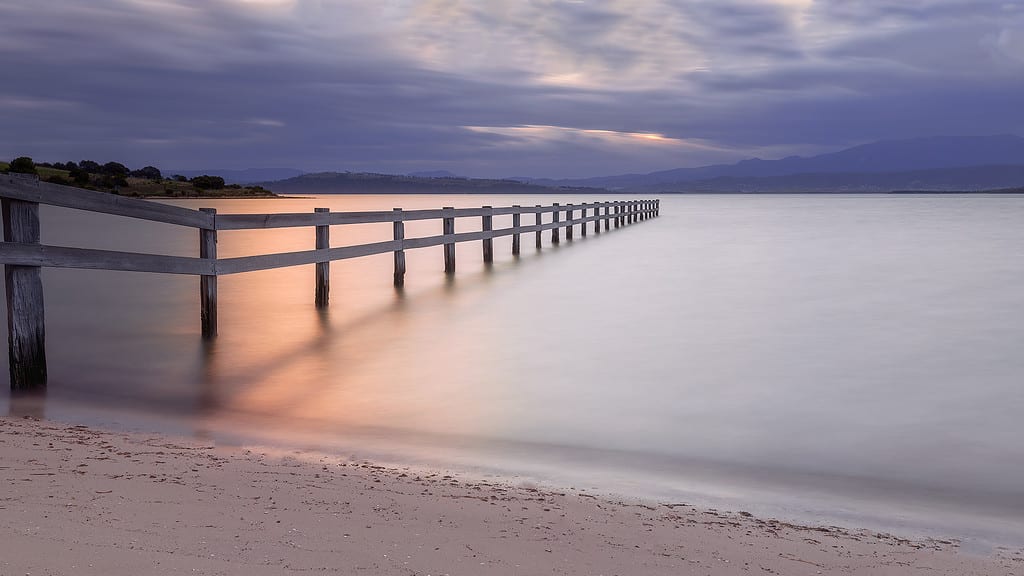
Key Elements of Leading Lines in Composition
Now that we’ve introduced the concept of leading lines, let’s delve into the specifics of how they function within a composition.
Understanding these elements can significantly enhance the way you capture and present your landscapes.
Here are some key aspects to consider when incorporating leading lines into your photography:
Inviting the Viewer into the Photo
Leading lines act as a gentle nudge, guiding the viewer’s eye into the heart of your scene.
Whether it’s a winding path or a row of trees, these lines create a welcoming path into your image, encouraging exploration and engagement.
Navigating from One Area to Another
In a well-composed shot, the viewer’s eye should move smoothly across the frame.
Leading lines facilitate this flow, connecting different elements of your photo in a cohesive journey. They can be architectural, like a series of arches, or natural, like the curve of a wave, each telling a part of your visual story.
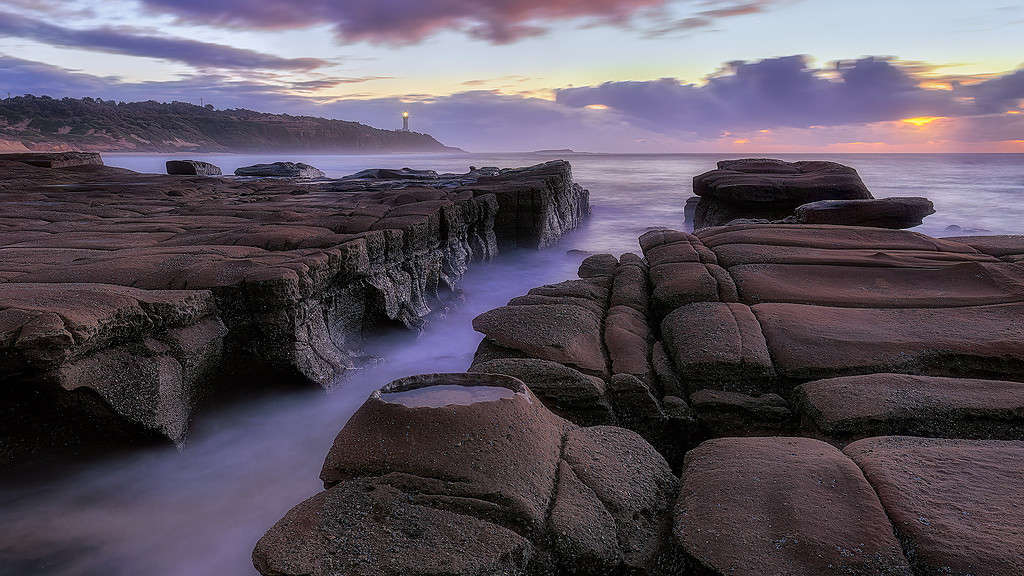
Focusing on a Point of Interest or Leaving it Open
Sometimes these lines lead to a specific subject, anchoring the viewer’s attention. Other times, they might lead towards the horizon, creating a sense of mystery or endless possibility. This choice can dramatically alter the narrative of your photo.
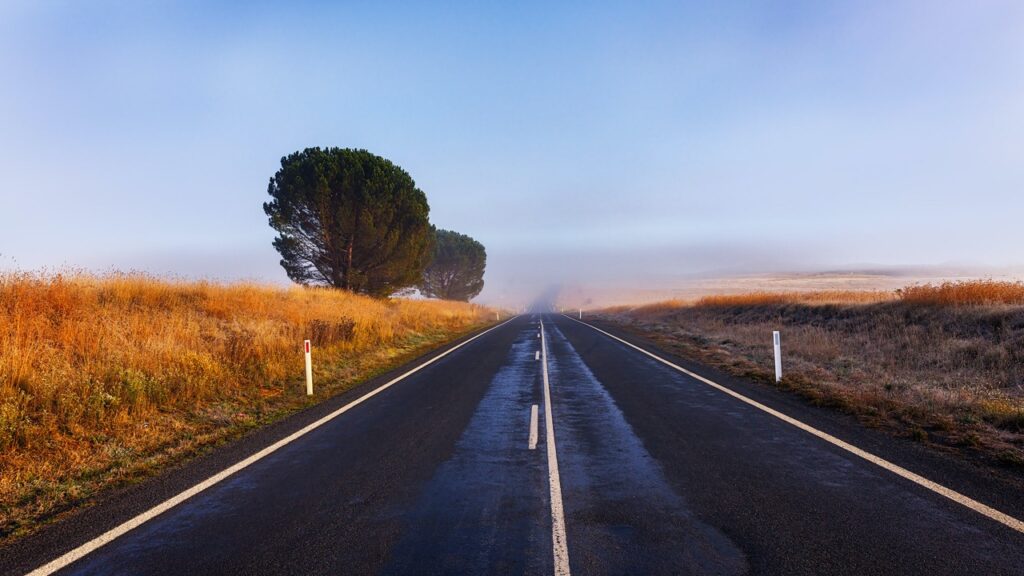
Enhancing the Mood and Narrative
The way you use leading lines can also set the mood of your image. They can create a sense of tranquillity, urgency, or wonder, depending on their direction and what they lead to. It’s about using them thoughtfully to complement the story you’re telling through your lens.
With these key elements in mind, let’s move on to exploring how leading lines can enhance your images, not just by drawing the viewer in, but also by telling a story.
How Leading Lines Enhance Your Images
Let’s take a closer look at how these lines can not only enhance your landscape photos but also add depth and emotion to them.
Creating a Visual Path
Think of leading lines as the welcoming gestures in your images. They’re there to guide the viewer’s eye, creating a path that leads through the entire scene. It’s like they’re saying, “Come on, I’ve got something amazing to show you.”

Telling a Story
Every photo has a story, and leading lines help you tell it more effectively. They can create a sense of journey, connect different parts of your scene, or add a layer of intrigue.
A winding road might whisper of adventures unknown, while a fence leading to a cosy cottage could hint at a story of homecoming.
Conveying Emotion
Just like the right words can set the tone in a chat, the direction and style of your leading lines can set the mood in your photos.
Diagonal lines can add a bit of drama and excitement, while gentle curves can soothe and calm the viewer. It’s all about using these lines to subtly influence how your image is felt, not just seen.
Directing Focus
In the busy world of a landscape, leading lines can be your way of highlighting the stars of your show. They help ensure that your viewer’s attention is drawn to the places you want them to notice, much like pointing out the highlights in a good story.
As you get more comfortable with using leading lines, you’ll start to see them everywhere – in the natural curves of a river, the lines of a cityscape, even in the shadows cast by the afternoon sun.
They’re not just compositional tools; they’re your partners in creating images that truly resonate with your audience.
Types of Leading Lines in Landscape Photography
Lines in your shots can be straight, curved, diagonal, vertical, or a combination of these. The idea is that the line enters the photo at some point, and leads the eye to another area of the photo.
Here’s a look at the different types you might encounter:
Finding Leading Lines in Nature
Mother Nature is quite the artist, isn’t she? Her brushstrokes, like rivers, mountain ridges, or rows of trees, are natural leading lines that add a sense of flow to your photos. These lines are like nature’s own pathways, inviting the viewer to wander through your image and soak in its beauty.
Utilising Manmade Leading Lines
Then there are the lines we humans add to the mix. Roads, fences, bridges – these manmade structures can be surprisingly photogenic. They bring a sense of order and can create a striking contrast against the wildness of nature, guiding the eye with their structured elegance.

Discovering Leading Lines that Aren’t Obvious
The real fun begins when you spot those not-so-obvious lines. Shadows stretching across a field, the glow of light trails in the evening, or patterns etched in the sand – these are the hidden gems. They’re like secret trails that add a touch of mystery and sophistication to your landscapes.
Using Converging Lines for Extra Attention
Converging lines, where paths or patterns meet, create a strong focal point. They’re particularly effective in adding depth and perspective, drawing the viewer’s attention to a specific part of your scene.

With these types in mind, let’s move on to exploring common mistakes to avoid when using leading lines in your photography.
Common mistakes to avoid
Navigating the use of leading lines in photography can be a bit like a dance – it takes a bit of practice to get the steps right. While leading lines can dramatically improve your compositions, there are a few common pitfalls to watch out for. Let’s go through some of these, so you can sidestep these mistakes and capture even more compelling images.
Watch for Distracting Lines
Just like a misplaced step in a dance can throw off the rhythm, a distracting line in your photo can disrupt the visual flow. Be mindful of lines that lead the eye away from your main subject or create unnecessary clutter. It’s all about harmony in your composition – every line should have a purpose and contribute to the overall story you’re telling.
Be Careful Where the Lines Enter and Leave your Frame
The way lines enter and exit your frame can make or break your photo. Think of it as guiding your viewer through a door – you want to make sure it opens to the right place. Lines that abruptly cut off can lead to a jarring experience, so aim for a smooth entry and exit that feels natural and keeps the viewer engaged with your subject.

Be Aware not to Cut Off Important Elements
It’s easy to get so focused on the leading lines that you accidentally crop out important parts of your scene. Keep an eye on the edges of your frame to ensure you’re not chopping off key elements. It’s like telling a story – you wouldn’t want to leave out the crucial parts of the plot.
Balance the Composition
Leading lines are powerful, but they need to be balanced with the other elements in your frame. A photo that’s too heavy on one side, or where the lines overwhelm the subject, can feel off-kilter. Strive for a composition where the lines complement, not compete with, your main subject.
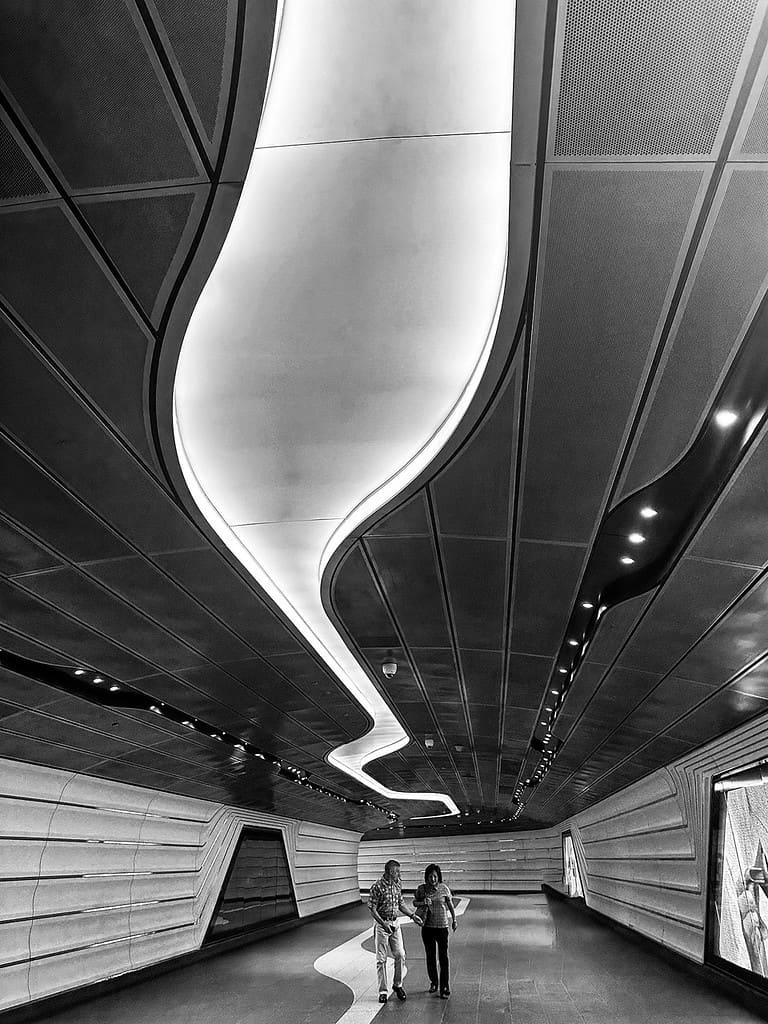
By keeping these points in mind, you’ll be well on your way to mastering the use of leading lines. It’s about finding that sweet spot where everything in your frame works together to create a harmonious and captivating image.
Combine with other Compositional Techniques
Leading lines are a fantastic tool in your photography arsenal, but when you combine them with other compositional techniques, that’s when they really start to sing. It’s like adding layers to a story – each technique brings its own strength and character to the image. Let’s dive into how you can blend leading lines with other methods for even more captivating compositions.
Rule of Thirds
Ah, the rule of thirds – it’s like the bread and butter of photography composition. By aligning your leading lines with the grid lines and intersection points of this rule, you can create a photo that’s not only well-balanced but also naturally pleasing to the eye. It’s like guiding your viewer’s gaze on a planned path through your image, ensuring they linger on the important parts.
Balance and Symmetry
Balance is key in photography, just as it is in life. Using leading lines to create or enhance symmetry in your images can lead to striking compositions. Imagine a reflection in a lake, with leading lines from both the real and reflected elements creating a harmonious balance. It’s about finding that sweet spot where every part of your photo feels like it’s in the right place.

Keeping it Simple
Sometimes, less is more. Leading lines are powerful, but they shine brightest when they’re not competing for attention. Use them to lead the eye to a simple subject or through a minimalist scene. This approach can create a sense of calm and clarity, making your subject stand out without the clutter.

Playing with Perspective
Leading lines can be a fun way to play with perspective. Use them to create a sense of depth or to exaggerate features within your landscape. Lines that converge towards the horizon can make your image seem deeper, while lines coming from different angles can add a dynamic, almost 3D effect.
By combining leading lines with these other compositional techniques, you’re not just taking a photo; you’re crafting a visual experience. It’s about using all the tools in your kit to create an image that tells a story, evokes emotion, and captures the eye. So next time you’re out with your camera, think about how you can mix and match these techniques to bring your own unique flavour to your photographs.
Post-Processing Tips for Leading Lines
Capturing your shot is just the beginning – the real finesse comes in post-processing. When it comes to leading lines, a few smart edits can significantly enhance their impact, guiding your viewer’s eye with greater effectiveness. Let’s dive into some practical tips to bring out the best in those leading lines during post-production, keeping it both straightforward and enjoyable.
Enhancing Contrast Around Leading Lines
Boosting the contrast around your leading lines can make them stand out more. Use selective editing tools to gently darken the areas around the lines or brighten the lines themselves. It’s akin to shining a light on your visual paths, ensuring they draw the viewer’s attention.
Dodging and Burning for Emphasis
The time-honoured techniques of dodging (lightening) and burning (darkening) can be quite impactful. Apply these methods along your leading lines to create a subtle yet effective emphasis on your main subject. It’s a way of subtly steering your viewer through the image, almost like an unseen guide.
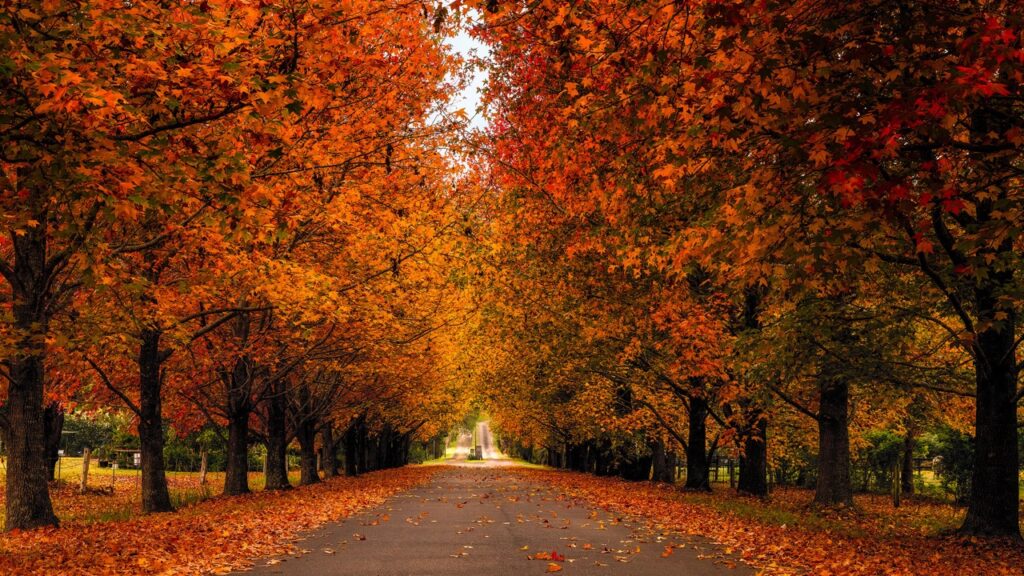
Selective Sharpening
A touch of sharpening along your leading lines can enhance their clarity. This helps to set them apart from the rest of the image. However, a gentle hand is crucial – too much sharpening can detract from the natural look of your photo.
Colour Adjustments to Guide the Eye
Colours can effectively highlight leading lines. Slightly tweak the saturation or hue along your lines to make them more prominent, or use them to guide the eye towards a colour-enhanced subject. It’s like using colour as a subtle signal, pointing the viewer in the desired direction.
Cropping for Stronger Composition
Strategic cropping can amplify the effect of your leading lines. Experiment with different crops to see how you can make your lines more prominent or guide the eye more effectively towards your subject.
Using Vignettes to Focus Attention
A gentle vignette can help centre the viewer’s focus, especially if your leading lines converge towards the middle or a key focal point of your image. This technique should be used subtly, just enough to guide the viewer’s gaze without being overt.

Remember, post-processing is where your creative vision comes to fruition. These tips are your tools to refine and enhance your image, ensuring that your leading lines are not just a compositional element, but a defining feature that elevates your entire photograph.
FAQ’s
How do I identify leading lines when I’m out in the field?
Spotting leading lines involves observing your surroundings with a keen eye. Look for natural or manmade lines like paths, fences, shorelines, or even patterns in the landscape. With practice, you’ll start to notice these lines more instinctively.
Are straight lines better than curved lines for leading the viewer’s eye?
Not necessarily. The effectiveness of straight versus curved lines depends on the composition and the story you want to tell. Straight lines can create a sense of direction and order, while curved lines can add softness and a sense of movement.
How do leading lines work with moving subjects?
A: With moving subjects, leading lines can guide the viewer’s eye to the action or create a sense of movement. For example, a road leading to a moving car can enhance the sense of speed and direction.
Can leading lines be too dominant in a photo?
Yes, leading lines should enhance, not overpower, your composition. If a line is too dominant, it can distract from the main subject. Aim for a balance where the lines support rather than dominate the scene.
Can shadows and light be used as leading lines?
A: Absolutely! Shadows and light trails can create effective leading lines, especially during the golden hour when shadows are longer, or at night with artificial light sources.
Wrapping Up
And there we have it – a journey through the world of leading lines in landscape photography.
Remember, these lines are more than just compositional tools; they’re your allies in storytelling, guiding your viewer’s eye and adding that extra punch to your shots.
As you head out with your camera, keep an eye out for those natural guides, be they in bustling city streets or the tranquillity of nature.
Experiment, have fun with it, and watch how these lines can transform your photos from simple images to captivating stories.
And most importantly, keep enjoying the process of discovery and creation.
After all, every photo you take is a new adventure, a new story waiting to be told.
Keep clicking and sipping! 📷 ☕ 🍷
Like this post? PIN it so you can save it for later
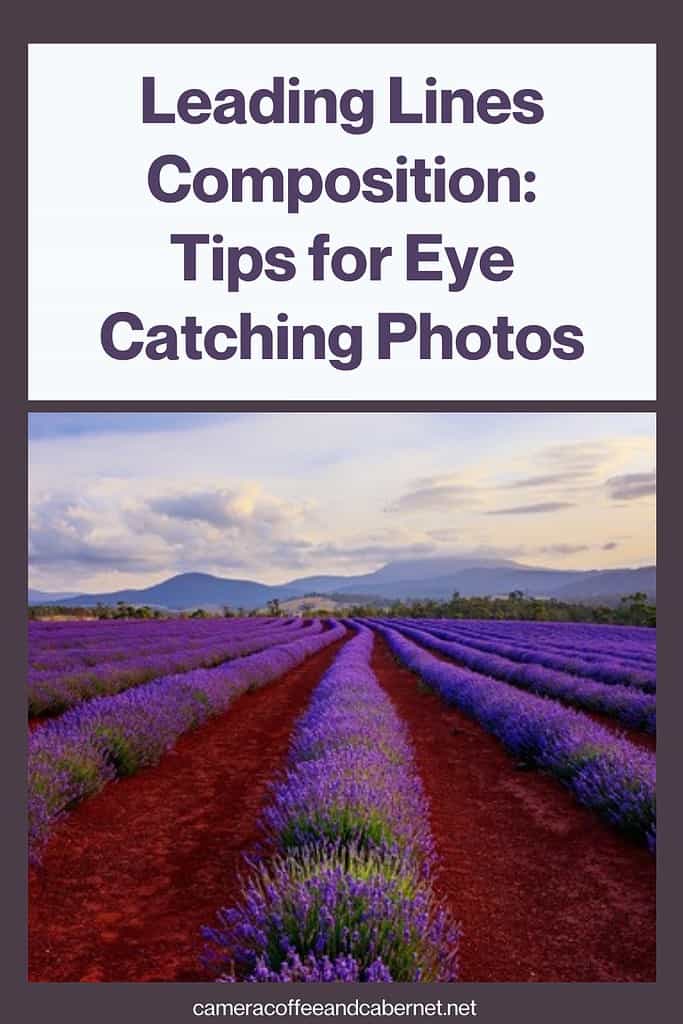
Other Helpful Articles for Beginner Landscape Photographers:
- Improve Your Landscape Photography Composition
- Landscape Photography Composition: How to Use the Rule of Thirds
- Frame Within A Frame: Easy Ways To Improve Your Composition
- Layers and Foreground Interest In Landscapes For Better Photos
- 15 Helpful Landscape Photography Guides For Beginners
- Landscape Photography Guide
- Complete Guide for Seascape Photography
- Landscape Photography – Tips to Help You Stay Inspired and Motivated
Don’t miss a post – sign up Here if you haven’t already
div class=”ml-embedded” data-form=”pP6jNl”>Are you a beginner landscape photographer looking to improve your skills and capture stunning photos of nature?
If so, “The Landscape Photography Handbook – Exploring the Wonders of Nature” is the perfect guide for you.
In this 90-page ebook, you’ll learn everything you need to know to get off auto mode and start using manual settings to capture stunning photos of nature.
